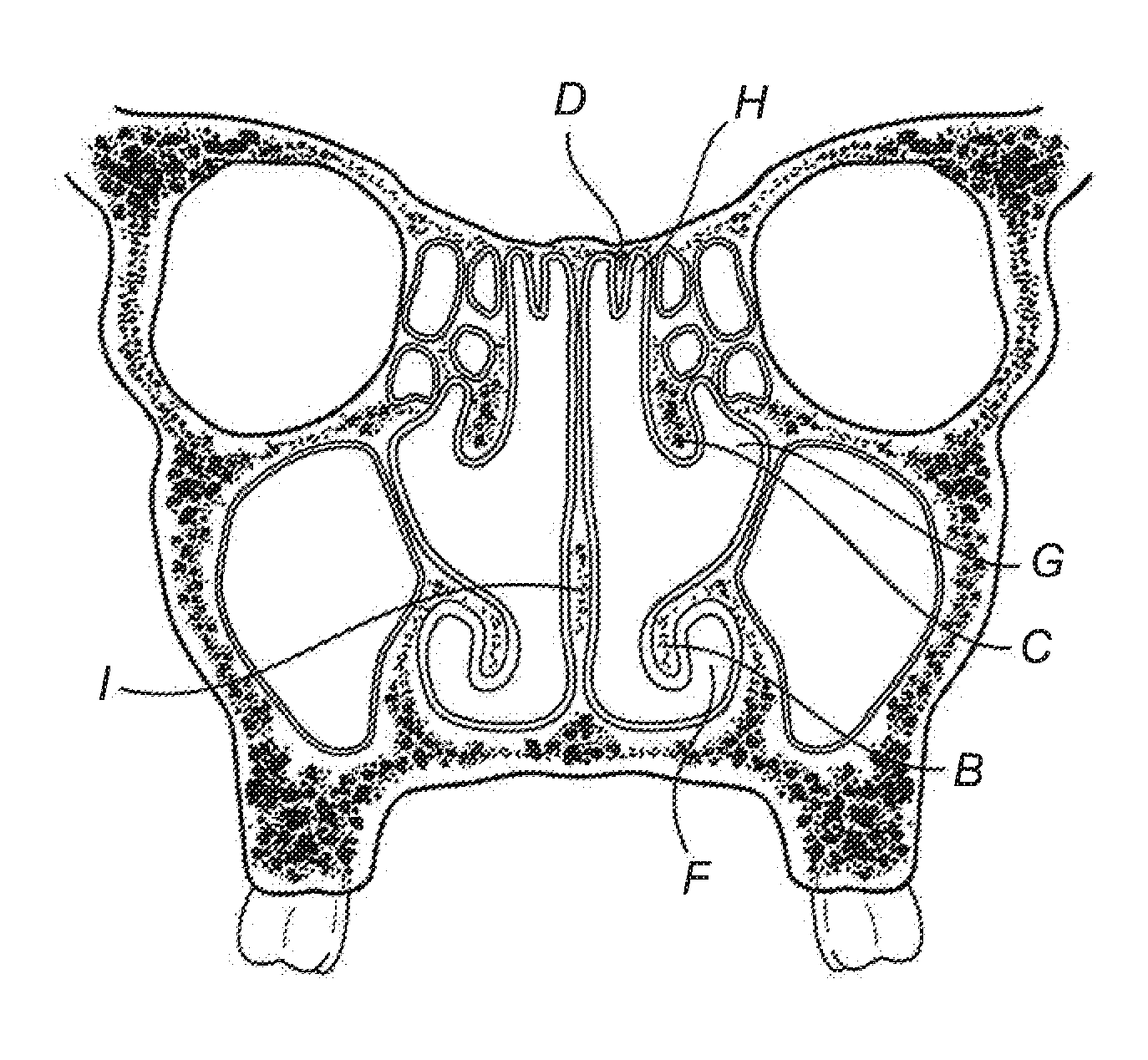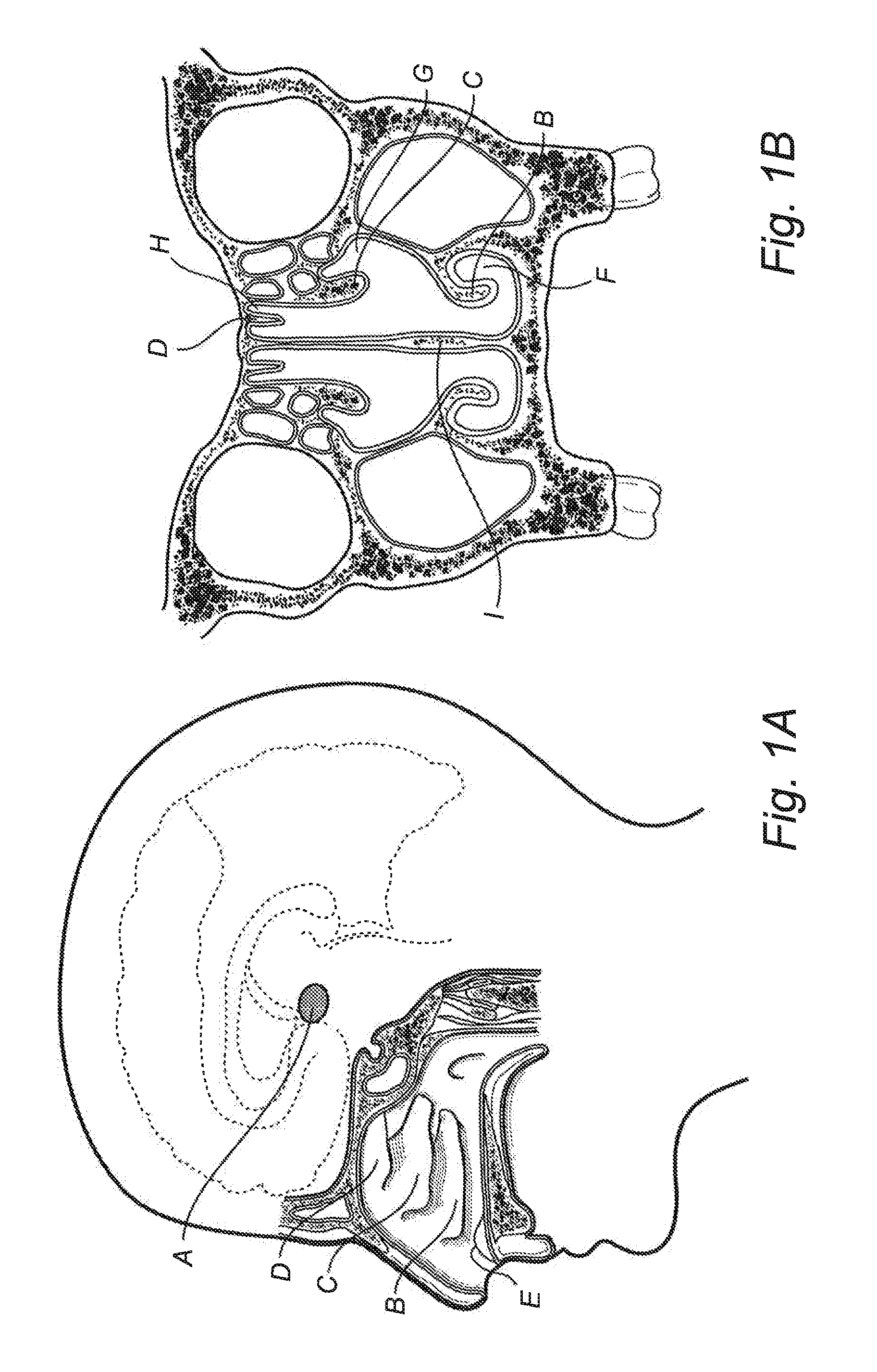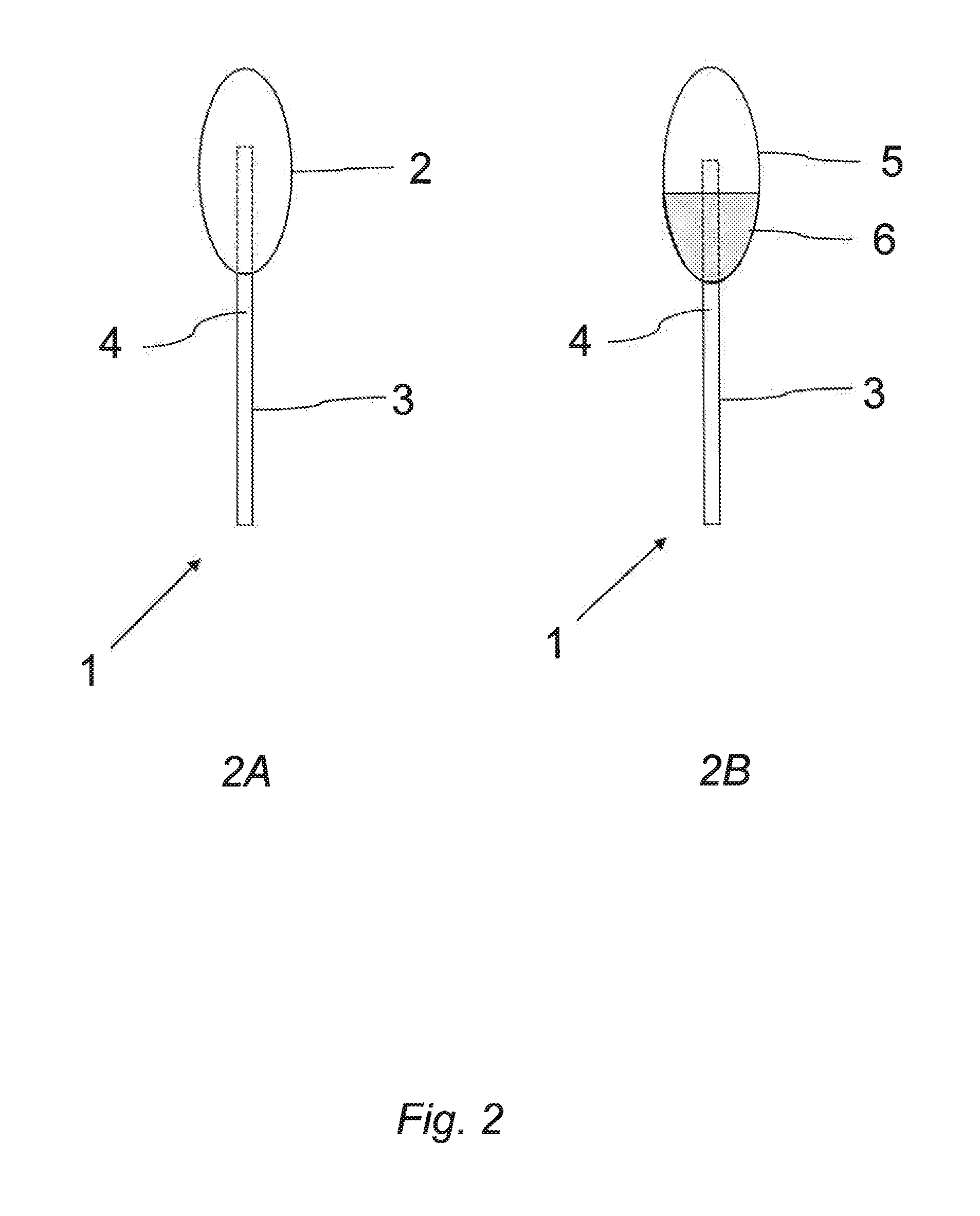Stimulation of hypothalamus
a technology of hypothalamus and stimulation, applied in physical therapy, medical science, chiropractic devices, etc., can solve the problems of lack of satisfactory treatment of the above-mentioned illnesses, severe hearing deterioration, and no otoprotective intervention currently exists, so as to reduce the demand on education of the staff, improve treatment, and simplify the effect of optimizing the attainment of the desired level of hypothalamic activity
- Summary
- Abstract
- Description
- Claims
- Application Information
AI Technical Summary
Benefits of technology
Problems solved by technology
Method used
Image
Examples
Embodiment Construction
[0085]Embodiments of the present invention will now be described as non-limiting examples and with reference to the Figures.
[0086]FIGS. 1A and B schematically depict the anatomy of the human nasal cavity(s). FIG. 1A is a side view schematically depicting a nasal cavity of a human and the position of hypothalamus, A, relative the nasal cavity. FIG. 1B schematically depicts the human nasal cavities seen from the front.
[0087]The nose has two cavities, separated from one another by a wall of cartilage called the septum, I, as can be seen in the front view of the nasal cavities in FIG. 1B. The vestibule, E, is the most anterior part of the nasal cavity. On the sides of the nasal cavity are three horizontal outgrowths called nasal conchae or turbinates. The conchae are several thin, scroll-shaped bony elements forming the upper chambers of the nasal cavities. They increase the surface area of these cavities, thus providing for rapid warming and humidification of air as it passes to the lu...
PUM
 Login to View More
Login to View More Abstract
Description
Claims
Application Information
 Login to View More
Login to View More - R&D
- Intellectual Property
- Life Sciences
- Materials
- Tech Scout
- Unparalleled Data Quality
- Higher Quality Content
- 60% Fewer Hallucinations
Browse by: Latest US Patents, China's latest patents, Technical Efficacy Thesaurus, Application Domain, Technology Topic, Popular Technical Reports.
© 2025 PatSnap. All rights reserved.Legal|Privacy policy|Modern Slavery Act Transparency Statement|Sitemap|About US| Contact US: help@patsnap.com



